What are the stages of laminitis?
There are two different phases of laminitis: the acute phase and the chronic phase. In acute laminitis, the symptoms appear suddenly and severely. At this stage it is very clear that the horse is severely lame and in great pain. The cause of acute laminitis is often a metabolic disorder that leads to circulatory disorders and inflammation in the hooves. At this stage it is very important that the horse is treated immediately by a veterinarian to prevent acute laminitis from developing into chronic laminitis.
Chronic laminitis is often the result of acute laminitis, but it can also develop gradually without acute symptoms being apparent. In this phase, the coffin bone has already separated from the hoof wall, which means that the coffin bone is no longer sitting straight in the hoof shoe.
Acute and chronic laminitis can also occur at the same time. In this case, the tip of the coffin bone puts increasing pressure on the sole, crushing it. In the worst case, the coffin bone can puncture the sole. It can also happen that the coffin bone completely separates from the horn capsule, causing the hoof horn to detach along the coronet and the horse losing its "horseshoe".
What are the symptoms of laminitis?
When a horse walks stiff and immobile, it can indicate laminitis. In addition, the horse's hooves are often warm and sometimes have a thickened and painful coronet. Due to the process of detaching the corium of the hoof, the coffin bone sometimes begins to tilt, which can eventually lead to a deformity of the hoof. The pain often appears on two or four hooves of a horse. The pain occurs mainly in the toe area of the sole. Often the tip of the frog is also sensitive. These are the first symptoms that indicate laminitis.
More obvious symptoms that indicate laminitis is the horse's posture trying to relieve its hooves. The horse also runs lame and sometimes does not want to move even a step. If the pain increases, the horse positions its front legs in a way that puts the least stress on them. To do this, the horse places its hind legs well under its body and its front legs further forward. This typical posture is a sign of severe laminitis.
In acute laminitis, fever is common, horses begin to sweat, and heart rate increases in response to the pain. In severe cases, the horse lies down a lot and sometimes cannot stand. The horse does not feel well and behaves restlessly.
What are the causes of laminitis?
There can be several causes of laminitis. Diet is often thought to be the main cause of laminitis, but there are many other factors that trigger laminitis.
The main cause of laminitis is the horse's diet. It mainly occurs when the horse is fed carbohydrates too quickly. If the horse consumes an excessive amount of high-energy feed, the intestinal flora is disturbed in such a way that toxins can form. When these toxins get into the blood, they can cause laminitis. One of the most well-known causes of laminitis is the fructan in spring grass.
Another cause lies in the diet, namely in the fed portions. In nature, horses eat all day long. The digestive system then provides a steady flow of carbohydrates. However, today horses are often fed portion-wise, which means that the fluctuations in glucose supply are much larger than can be the case in nature. Concentrated feed is often rich in grain products that contain a lot of carbohydrates but hardly any fiber. As a result, carbohydrates are released quickly, but are also quickly broken down again. Despite all the efforts of the pancreas, the blood sugar level rises very quickly at first, but then falls again very quickly.
Magnesium deficiency is also becoming more common in horses prone to laminitis. Unfortunately, although magnesium is commonly found in various dietary supplements, it does not appear to help prevent or correct magnesium deficiency. If there is a magnesium deficiency, the cells become less sensitive to insulin, which causes the blood sugar level to fluctuate greatly. To prevent this, you can feed them magnesium citrate.
In addition, laminitis can occur when overheated horses drink too much cold water. This cold water affects the composition of the bacterial flora in the intestine. In this way, the organisms that produce toxins gain the upper hand. The toxins formed impair the blood supply in the horse's lower hooves. Since the blood flow in the hoof is disturbed, the tissue dies. This happens first in the hoof corium.
However, there are other causes that can trigger laminitis. This includes uterine inflammation. It occurs when mares fail to wean the afterbirth within 6 hours of giving birth to the foal. This can cause uterine inflammation, which in turn can lead to poisoning. This poisoning often leads to the development of laminitis.
Other causes cited are the extra strain on a leg that can occur when a horse is healing from lameness. Working long hours on hard ground, long trips in a trailer, taking certain medications, emotional factors, stress and resting in the stable are also mentioned as causes of laminitis.
How is laminitis treated?
If you suspect your horse has laminitis, you should see a veterinarian as soon as possible. If you see a veterinarian as soon as possible, the chances of recovery are higher. Because there is a risk of irreparable damage if the horse walks around with the disease for too long.
When treating the horse, the vet first administers anti-inflammatory and painkillers. Anticoagulant and antihypertensive medication can also help to improve blood circulation in the hooves. After these measures, the veterinarian will explain how to proceed.
After the veterinarian has successfully treated acute laminitis, it is the farrier's job to treat the horse. The farrier must be careful not to tilt the coffin bone. Unfortunately, if the coffin bone is tilted, there is nothing you can do about it. The farrier can prevent this by shoeing the horse with special horseshoes. This fitting gives the foot and the sole better grip.
Unfortunately, once a horse has developed laminitis, it has developed a greater sensitivity. Then it is important that you take a close look at the horse's diet and implement it in a considered manner. It is also desirable not to put these horses out to pasture in spring and autumn.
The fructan content is highest during these times of the year, which increases the risk of laminitis. However, you can place these horses in a paddock with sand.
How can laminitis be prevented?
To reduce the risk of severe laminitis, there are three things you can do preventatively. These are the diet, the housing and the way the horse is trimmed.
The main cause of laminitis is the horse's diet. When it comes to nutrition, the simpler it is, the better. Also, changes in the feeding schedule should be made gradually. It is claimed that a change should be made within 5 to 10 days. Sudden changes should therefore be avoided.
Another reason is often the accommodation. It is important that the horse gets enough exercise. It is important for the mechanism in the horse's hooves that the horse be in motion. If the horse stands still for too long, this has a negative effect on the blood circulation in the hooves.
Finally, the type of shoeing has an impact on the prevention of laminitis. If you discover that the horse has laminitis, it is advisable to remove the current shoe. This is done primarily to reduce pain and pressure on the horse's hooves. After the horseshoe has been removed, the horse should be trimmed so that the coffin bone is again parallel to the ground. If necessary, the blacksmith can fit special horseshoes.
This text was translated by a translation machine
 Horse Pharmacy
Horse Pharmacy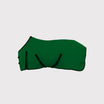 Rugs
Rugs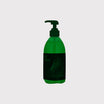 Care
Care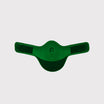 Saddle and Attachments
Saddle and Attachments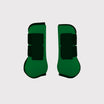 Leg Protection
Leg Protection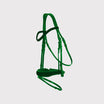 Bridles
Bridles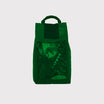 Feed
Feed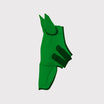 Fly Masks
Fly Masks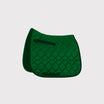 Saddle Pads
Saddle Pads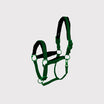 Headcollars and Ropes
Headcollars and Ropes Bits
Bits Other Disciplines
Other Disciplines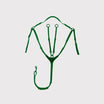 Reins and Auxiliary Reins
Reins and Auxiliary Reins Clipping
Clipping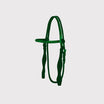 Western
Western Eventing
Eventing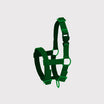 Foals
Foals Reflection
Reflection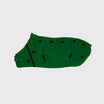 Therapy Products
Therapy Products Boots and Shoes
Boots and Shoes Breeches and Belts
Breeches and Belts Tops
Tops Safety
Safety Competition
Competition Heated Clothing
Heated Clothing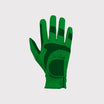 Gloves
Gloves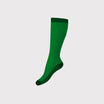 Socks
Socks Spurs and Attachments
Spurs and Attachments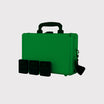 Technology
Technology Whips
Whips Gifts
Gifts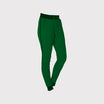 Casual Wear
Casual Wear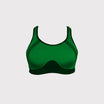 Underwear
Underwear Rider Pharmacy
Rider Pharmacy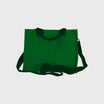 Bags
Bags Books
Books Laundry supplies
Laundry supplies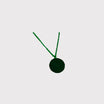 Jewelry
Jewelry Feed and Waterbowls
Feed and Waterbowls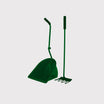 Equipment
Equipment Tack Room
Tack Room Pest Control
Pest Control Arena
Arena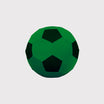 Horse Toys
Horse Toys Wheelbarrows
Wheelbarrows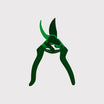 Yard
Yard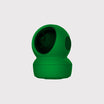 Surveillance
Surveillance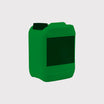 Disinfect
Disinfect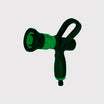 Washing Area
Washing Area Lighting
Lighting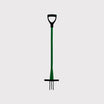 Horse Pasture
Horse Pasture Current Conductors
Current Conductors Pole
Pole Insulators
Insulators Energisers
Energisers Gate Handles
Gate Handles Batteries and Accumulator
Batteries and Accumulator Nets
Nets Grounding
Grounding Tools
Tools Fencing Security
Fencing Security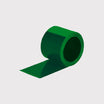 Wolf Defense
Wolf Defense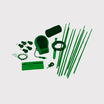 Fencing Sets
Fencing Sets Fence locks
Fence locks Dogs
Dogs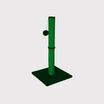 Cats
Cats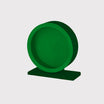 Rodents
Rodents Dogs Pharmacy
Dogs Pharmacy Cats Pharmacy
Cats Pharmacy Rodents Pharmacy
Rodents Pharmacy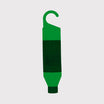 Cattle Pharmacy
Cattle Pharmacy Poultry Pharmacy
Poultry Pharmacy Veterinary Supplies
Veterinary Supplies Cattle
Cattle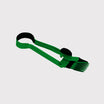 Sheep and Goats
Sheep and Goats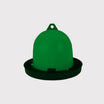 Poultry
Poultry Heat Lamps
Heat Lamps Calves
Calves Marking
Marking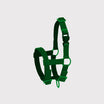 Halters
Halters